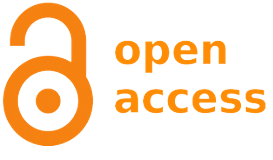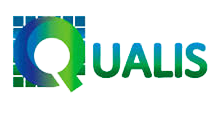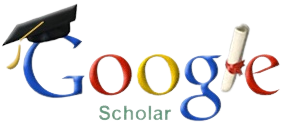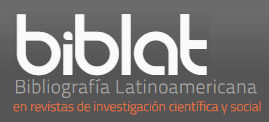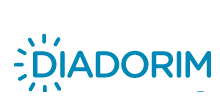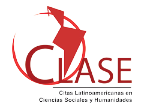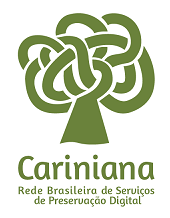Reading in web infographic: multimodality in classroom
DOI:
https://doi.org/10.5433/1519-5392.2018v18n1Supl.p65Keywords:
Infographic genre Web, Reading, MultiletramentosAbstract
The advances brought by technology have led to the emergence of new genres based on new media. As the web infographic is a new genre emerged from this multimodal rise, we try to propose to teachers a new tool for teaching reading. When considering the circulation of web infographics in national and vestibular exams, we believe that they have not been frequently explored in the classroom. Therefore, we intend to present a teaching proposal with a web infographic genre aimed at secondary school students. Guided by theoretical contributions such as Bronckart (2006); Shepherd and Watters (1999); Marcuschi (2005), Pinheiro (2010), Dionísio (2011), Kato (1995), Solé (1998), Paiva (1998), among others, sought to broaden the learner's reading ability, writing it in the genre in question, and preparing it to work in different fields, as well as national examinations. As a measure, we seek with this teaching proposal to support the teaching work.
Downloads
References
BRONCKART, Jean Paul. As condições de produção dos textos. In: Atividade de linguagem, textos e discursos: por um interacionismo sócio-discursivo. Trad. Anna Rachel Machado, Péricles Cunha. São Paulo: EDUC, 2003.
BRONCKART, Jean Paul. Os tipos de discurso. In: Atividade de linguagem, discurso e desenvolvimento humano. Campinas: Mercado de Letras, 2006.
DIONISIO, Ângela Paiva. Gêneros textuais e multimodalidade. In.: KARWOSKI, Acir Mário; GAYDECZKA; BRITO, Karin Slebeneicher (Orgs.). Gêneros textuais: reflexões e ensino. São Paulo: Parábola Editorial, 2011. pp. 137-152.
G1.Operação Lava Jato. Disponível em: http://especiais.g1.globo.com/videos-interativos/#!/politica/operacao-lava-jato. Acesso em: 22 out. 2015
KATO, Mary. O aprendizado da leitura. 4 ed. São Paulo: Martins Fontes, 1995.
KRESS, Gunther; LEEUWEN, Theo Van. Multimodal discourse: The modes and media of contemporary communication. London: Bloomsbury Academic, 2010.
MARCUSCHI, Luiz Antônio. Gêneros textuais emergentes no contexto da tecnologia digital. In: MARCUSCHI, Luiz Antônio; XAVIER, Antônio Carlos (Orgs.). Hipertexto e gêneros digitais: novas formas de construção de sentido. 2 ed. Rio de Janeiro: Lucerna, 2005. p. 13-31.
MARCUSCHI, Luiz Antônio. Gêneros textuais: dinamicidade, configuração, circulação. In.: KARWOSKI, A. M. GAYDECZKA, Beatriz, BRITO, Karim Siebeneicher. Gêneros textuais: reflexões e ensino. União da Vitória – PR, 2005.
MARCUSCHI, Luiz Antônio. Produção Textual, análise de gêneros e compreensão. São Paulo: Parábola Editorial, 2008.
MPF combate a corrupção. Entenda o caso - Caso Lava Jato. Disponível em: http://lavajato.mpf.mp.br/entenda-o-caso. Acesso em: 22 out. 2015.
NASCIMENTO, Roseli Gonçalves do; BEZERRA, Fábio Alexandre Silva; HEBERLE, Viviane Maria. Multiletramentos: iniciação à análise de imagens. Linguagem & Ensino, Pelotas, v. 14, n.2, p. 529-552, jul./dez. 2011.
OLIVEIRA, Derli Machado. Gêneros multimodais e multiletramentos: novas práticas de leitura na sala de aula. In: FÓRUM IDENTIDADES E ALTERIDADES II CONGRESSO NACIONAL EDUCAÇÃO E DIVERSIDADE, 4., Itabaiana/SE, 2013. Anais... Itabaiana/SE: UFS, 2013.
PAIVA, F. A. O gênero textual infográfico: leitura de um gênero textual multimodal por alunos da 1ª série do ensino médio. Revista L@el em (Dis- )curso. v. 3, 2011, p. 87-101.
PAIVA, Francis Arthuso. A Leitura de Infográficos da Revista Superinteressante: procedimentos de leitura e compreensão. 2009. 204 f. Dissertação (Mestrado em Estudos Linguísticos) - Universidade Federal de Minas Gerais, Belo Horizonte, 2009.
PINHEIRO, Petrilson Alan. Gêneros (digitais) em foco: por uma discussão sóciohistórica. Alfa: Revista de Linguística 54.1 (2010): 33+. Academic OneFile. Web. 10 set. 2015. p.33-58.
ROJO, Roxane; MOURA, Eduardo. Multiletramentos na escola.São Paulo: Parábola Editorial, 2012.
SHEPHERD, Michael; WATTERS, Carolyn.The Functionality Attribute of Cybergenres. Proceedings of the 32nd Hawaii International Conference on System Sciences – 1999.
SOLÉ, Isabel. Estratégias de Leitura. 6 ed. Porto Alegre: Artmed, 1998.
Downloads
Published
How to Cite
Issue
Section
License
Entretextos adota a Licença Creative Commons Attribution 4.0 International, portanto, os direitos autorais relativos aos artigos publicados são do(s) autor (es).
Sob essa licença é possível: Compartilhar - copiar e redistribuir o material em qualquer suporte ou formato. Adaptar - remixar, transformar, e criar a partir do material, atribuindo o devido crédito e prover um link para a licença e indicar se mudanças foram feitas.






